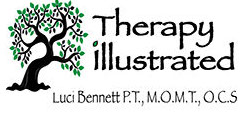


Guided Perseverance Pays Off
J is a 65-year-old man who pursued a life of active fun and adventure. Unfortunately, this life of adventure also included a lot of accidents and falls. J likes to ski, hike, and climb ice and rock. Over the years, he has developed a constant low grade pain in his back that was very stiff in the mornings but would improve once he got up and moving around. He still enjoyed hiking but started limiting the ski and climbing trips because it got too hard to recover from the falls.
One day, J was mowing the lawn when he experienced a severe sharp shooting pain from his back down into his left leg. He was lifting the bag and dumping the clippings when this pain attack occurred. From that point on, he had severe leg pain every morning that would let up by the afternoon. J’s lifestyle became more limited. At this point, he was down to walks around the park.
Three to four months later, J was bending over to lift the trash when the edge of the can caught causing him to jerk a little. The flash of pain into his leg was so severe that he couldn’t stand upright for several hours. He hobbled over to his couch and rested there for the rest of the day. J’s symptoms took a big turn for the worse, and his leg pain became constant especially when he walked for more than 5 minutes.
J finally decided to see his doctor. Initial x-rays revealed severe arthritic changes. The medication that the doctor prescribed did little to change J’s pain. The next step involved getting an MRI, which revealed severe stenosis and bone spurs. The doctor recommended that J see a surgeon. J told his doctor that he really wanted to avoid surgery because he had climbing buddies that never went out again after their surgeries.
J started therapy immediately. His treatment consisted of heating pads, deep tissue massage and stretching exercise. J was extremely motivated and tended to add exercises of his own thinking that more was better. He responded well with less intense pain and longer walks but he still had a lot of stiffness and pain in the mornings. J had a big setback after adding some intense yoga stretches to his routine. Once the therapist realized that J had been following his own routine, she sat him down and explained the mechanics of stenosis. It is extremely important to avoid any stretched or strengthening exercise that compresses the nerve root.
J and his therapist went through the entire program together and modified the exercises, deleting some of them. Slowly J’s symptoms improved. It took about six months of regular stretching for 30 minutes every day. J is back out hiking and climbing. Regardless of whether or not J had surgery, mobility of the spine must be restored once inflammation has been resolved, and that takes time. Surgery is important to do if the nerve root is entrapped and deteriorating. J was lucky in that his nerve decompressed once the inflammation resolved. He learned how to safely stretch and worked at it consistently. It takes time, but it is possible to improve spinal mechanics.
